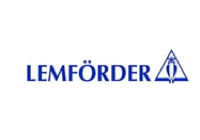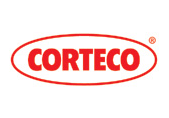Wheel suspension
The wheel suspension is part of the chassis. The chassis comprises the following components: wheels, wheel carrier, wheel bearing, brake, wheel suspension, axle support, suspension (including anti-roll bar)...
Function
The wheel suspension is part of the chassis. The chassis comprises the following components:
Wheels
Wheel carrier
Wheel bearing
Brake
Wheel suspension
Axle support
Suspension (including anti-roll bar)
Damping
Steering gear
Steering column
Unit mount (e.g. engine and transmission bearings)
Side shafts
Axle drive
Suspension control systems.
In a mid-class vehicle, these components account for 20% of total weight. On the one hand, the function groups listed are self-enclosed systems. On the other hand, they must be precisely co-ordinated in order to optimise the functionality of the chassis as a whole.
Within the chassis, the role of the wheel suspension is to optimise wheel control. As such it represents the link between the wheel contact face and the vehicle body and transmits all forces and movements from the wheel carrier to the body. For safety purposes, this process must take place quickly and without delay. This is achieved with hinged links inside the wheel suspension.
Links of wheel supsension
The links take over both the tasks associated with wheel guidance and also frequently the transmission of spring, damping and anti-roll bar forces. They are made from steel (forged, cast, sheet) or aluminium (forged, die-cast). Design requirements determine whether two, three, or four-point links are used. The points are the number of connecting points a link has.
Amount of front and rear axle
Links with ball joints are always used for connecting the wheel carrier to the body at the front axle (FA). They allow the freedom of movement required to steer the wheel. At least three links are required for wheel control: a lower link, an upper link and the track rod. For axles built with spring struts, two links and the damper are sufficient for wheel control. However, there are also axles where up to five links are used. In the case of these special designs, the applied forces are distributed across the links. Ball joints are not absolutely necessary at the rear axle (RA). Therefore, rubber mounts or bushing links are usually used. For optimum rear axle control, five joints and five two-point links are required.
Types of link
Links are differentiated based on mounting direction:
- Wishbones. Wishbones are positioned diagonally to the wheel plane.
- Trailing arms. Trailing arms are installed in the direction of travel.
- Twist-beam link. A twist-beam link involves two trailing arms which are connected with a wishbone. Links are divided into three categories based on the function they are to perform:
- Control arms. Control arms guide the wheel without supporting the weight of the vehicle. The forces applied at the joints of control arms are primarily horizontal.
- Carrier arms. This category includes links with additional force application points for spring and damper forces which act vertically and are greater than the horizontal forces. The joints (also known as carrier joints) are thus larger and more stable than the control joints. In principle, any control arm can be used as a carrier arm subject to appropriate design where force application points and reinforcement are concerned.
- Auxiliary links. Auxiliary links facilitate connections between control arms and carrier arms or, in the case of special axle designs, with the wheel carrier.
The joints of the links
Every link has at least two joints. Joints on the body side The joints on the body side of the car use rubber bearings that are pressed into the designated bore holes in the link. Movement takes place in the rubber. Neither the outer ring nor the inner sleeve of the rubber bearing may move. This requires a perfect connection between the rubber (elastomer body) and the metal. With these joints, rotation is restricted to an angle of approx. ±20 degrees and horizontal/vertical movement is restricted to a distance of ±1 mm. The advantages of this type of joint are to be found primarily in the ability of the rubber to dampen vibration and sound. Joints on the wheel side Joints on the wheel side connect the link to the wheel carrier using ball joints which are riveted or screwed to the link or pressed into a barrel casing. Flange-mounted ball joints can be replaced without replacing the link, thus reducing repair costs. Built-in ball joints are integrated into links and must therefore be completely replaced when a link is replaced. The advantage of this design is that it is lighter in weight, takes up less installation space and is more reliable as there are no interfaces. ?Ball joints at the front axle enable the wheel to move freely upwards and downwards and all the castor to be changed. Tensile forces, compressive forces and transverse forces can thus be absorbed and transmitted to the links. As ball joints have to absorb all occurring wheel forces (but not drive and brake forces) they must meet the most exacting of requirements. These are:
- Constant torques
- Zero play (play leads to "clattering")
- Maintenance-free?- Transmission of high forces
- Compact, small, lightweight
- Compliance with safety requirements
- Ability to withstand environmental factors, i.e. temperatures from approx.
- 40°C to +80°C, dirt, salt, stone chips and rust
Safety
The wheel suspension is critical for safe driving and thus for passenger safety. A malfunction or the failure of one of the wheel suspension components can have major consequences for the road safety of a vehicle – even endangering life and limb. Therefore, it is of paramount importance that work on the chassis is carried out by trained specialists only. Regular component inspections are also essential. Particular attention must be paid to the tightness of rubber bellows and joints, as well as to the deflection backlash of the ball pins (axial play). The use of products by well-known OE suppliers is mandatory.
Depreciation
The state-of-the-art technology used in modern vehicles ensures that wheel suspension components are very unlikely to fail. This is reflected positively in breakdown statistics and helps the vehicle to retain value.
Environmental protection
The use of permanently lubricated joints saves resources and stops pollution of the environment due to excess lubrication.











